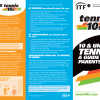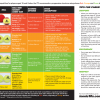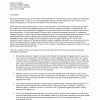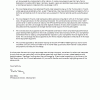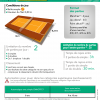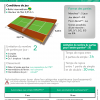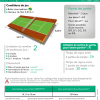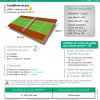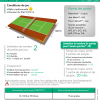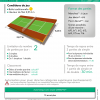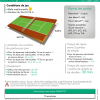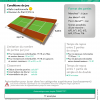By Dave Miley
As the Director of Development for the International Tennis Federation (ITF), I have seen remarkable growth and progress over the past five years through the ITF’s Tennis Play and Stay campaign and the subsequent launch of Tennis10s / 10U Tennis Worldwide. I was surprised therefore to read an article this week in WorldTennisMagazine.com from Charlie Bricker. It was obvious that he had been misinformed about the ITF global rule change for 10 and under competition which was unanimously approved by the ITF Annual Meeting in 2010 and which came into effect in January 2012.
This article indicated that the French Federation (FFT) does not follow the ITF rule prohibiting yellow balls for 10U competition. This is untrue and I have sent to Mr. Bricker an email from the person in charge at the FFT confirming that the yellow ball is not used in 10 and under competition and enclosing the detailed direction given by the FFT to all sanctioned 10U competitions. They mandate the use either the orange (for eight year olds on an 18 meter court) or green ball (for 9-10 year olds on a full-size court).
The FFT has been using the green ball in the 10U nationals for over five years, and players, coaches and parents are aligned. The yellow balls are NOT used for any sanctioned 10U competition in France. Thus the rule change of the ITF is fully respected throughout France. Incidentally, the French have more players than any other nation competing in the main draws of the Grand Slams, so by that measurement they have been quite successful at developing players.
The article also continued to say that the rule forces children to play on smaller courts. This is not true. The green ball is played on the full tennis court. The ITF rule simply eliminates the use of the yellow ball in 10 and under competition.
For clarification, the rule prohibiting yellow balls 10U tournaments was unanimously approved by the ITF’s 205 member nations – including France and the US – in 2010, and went into effect on January 1, 2012. This was monumental, because it represented merely the fifth rule change in the history of tennis.
Certainly coaches are free to use various balls – and methods – during training. The ITF does NOT mandate anything about how practice sessions are structured but of course has guidelines recommending the use of certain balls, rackets and courts for different ages. I am attaching a leaflet which outlines these guidelines. (See gallery at bottom)
Virtually every other sport already uses appropriate-sized equipment for children and the rule change was only implemented after 10 years of discussion/interaction with coaches, the tennis ball and racket manufacturers and tennis specific sports scientists. Not only were the USTA involved in the ITF Task Force during those 10 years but also represented in the task force were the PTR and the USPTA though Dan Santorum and Fred Viancos respectively.
The feedback worldwide to the rule change has been very positive and my understanding is that it has already had a very positive impact in the USA and the balls sales of red, orange and green balls in the USA (50,000 to 3.5 million) and the increase in the numbers of children playing competitively in 10 and under competitions in the USA demonstrates this success. Prior to the launch of 10 and under tennis, the number of American boys and girls participating in sanctioned 10U competition was extremely low and was even less than the total number participating in a small country like Belgium.
I am attaching the information from the FFT on their 10 and under events, the tennis 10 parent’s leaflet and also a letter sent last February to the Wall Street Journal which outlines the ITF position related to certain concerns expressed at that time. (Gallery also included at bottom)
We have a great sport and we believe these changes will make the sport much better not only for increasing participation but also from the area of developing high performance players.
The ITF value very much the promotion that publications like yours give to the sport. However it is important for the ITF to ensure that the facts about the rule change are presented correctly and as you will see from the points made above, the article did not do that and I would appreciate it if you would correct the inaccuracies as soon as possible.
Yours sincerely,
Dave Miley
ITF Executive Director, Development


